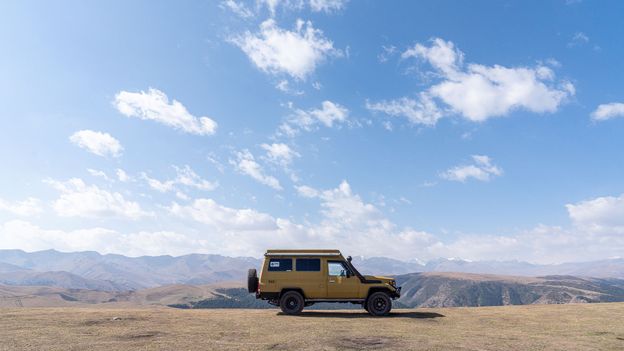Altyn-Emel’s premier treasure is Aigaikum, (the “Singing Dunes”), a 240-hectare double sand dune stretching more than 3km. Around 200,00 years ago, an earthquake split the surrounding mountains apart and a strong wind corridor formed, carrying grains of sand from the foot of the mountains into the eventual dunes. I wanted to hear Aigaikum’s elusive song: at certain conditions, the dune produces a loud, low-pitched vibration sound akin to the nomadic throat-singing tradition that’s being repopularised by young Kazakh folk groups like Turan.
“I came to Altyn-Emel originally to help my parents,” said Saltanat Bayadilova, owner of the nearby Aigai Kum guesthouse, as she poured me a cup of fresh-from-the-cow raw milk, a drink that’s still commonly found in rural areas. “I never left. Our nature is so special, and I love the fact that I live here.”
Setting off on the A-3 road that would eventually bring us back to Almaty, I was quieter than usual. As petrol stations, fast food restaurants and the tell-tale signs of urbanity reappeared, I thought back to what Mugynov told me: “Our culture is all about the land. It’s important for us to see what our land looks like, to develop a connection.”
“We were nomads,” Mugynov added. “We were not living in the cities, we were traversing this land. This is who we are.”
The Open Road is a celebration of the world’s most remarkable highways and byways, and a reminder that some of the greatest travel adventures happen via wheels.
—
Join more than three million BBC Travel fans by liking us on Facebook, or follow us on Twitter and Instagram.
If you liked this story, sign up for the weekly bbc.com features newsletter called “The Essential List”. A handpicked selection of stories from BBC Future, Culture, Worklife and Travel, delivered to your inbox every Friday.

